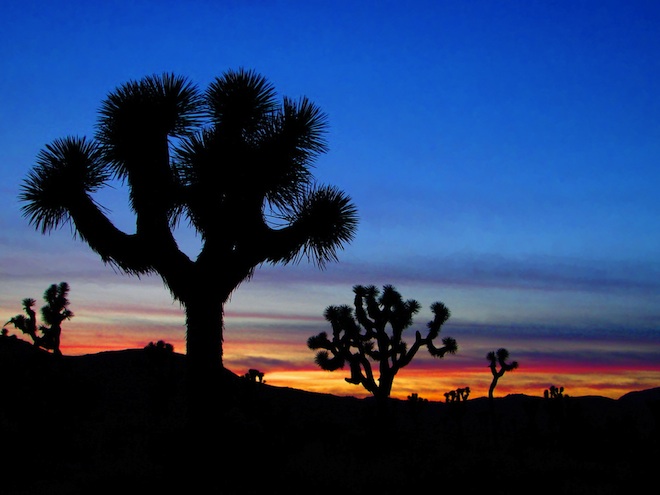Slated for a site 36 miles west of Blythe, California, the 500MW Palen Solar Plant – a collaborative project between BrightSource Energy and Abengoa Solar – is meeting resistance from critics concerned about its light pollution.
BrightSource energy bought the Palen Solar Project when Solar Trust of America went bankrupt last year, My Desert reports.
At the time, the project had received state, but not federal approval, and now both BrightSource Energy and partner Abengoa Solar are required to undergo a whole new round of permitting.
As part of this process, two meetings were scheduled to give the public an opportunity to express their reservations about the project. And this time (BrightSource is no stranger to obstacles in its multi decade pursuit to provide clean solar energy), it isn’t the desert tortoise causing a ruckus, but light pollution.
“Excessive lighting could cause impacts to Joshua Tree National Park’s dark sky, said Seth Shteir from the National Parks Conservation Association. “That part of the park is the darkest part of the park.”
Famous for its namesake the unique Joshua Tree and its epic rock climbing opportunities, the park is said to be in the sight line of the solar power plant, which will incorporate two 750 foot concentrating solar power towers instead of solar trough technology.
Most of the light pollution will occur during the construction phase, which is expected to last two years, although the tall towers upon which hundreds of heliostats will concentrate sunlight will be visible from great distances as well.
The paper reported that both the California Energy Commission (CEC) and the Bureau of Land Management (BLM) have conducted separate environmental impact reports that reference the potential light pollution, and both dismiss it as being mostly a peripheral issue.
Businesses that rely on tourism for their bread and butter are far less nonchalant about the light pollution’s potential impact.
Paul Smith, who owns a small hotel, said that the towers would be visible from the Mojave National Preserve as well and urged for a more in-depth study that takes tourism and the local economy into greater consideration – even if the project is expected to generate jobs and reduce carbon emissions by 17 million tons over its 30 year lifetime.
“At least one-third of the park will be substantially affected,” Smith said of Joshua Tree National Park, according to My Desert.
“You have to deal with direct use benefits, community impacts, offsite benefits, scientific benefits, educational benefits, ecosystem service benefits. It’s hard to put into dollars.”
:: My Desert
Image of Joshua tree silhouette, Shutterstock




I think that if the people want it they should make the investment individually. Especially in the US, a country which has opted to be capitalistic. Those socialists in the US have to make the first move. They will take the burden of the extra expense and the rest of the country will eventually catch up due to public pressure. Leaded fuel wasn’t phased out overnight. It took years: http://yosemite.epa.gov/R10/airpage.nsf/webpage/Leaded+Gas+Phaseout
Thanks Todd! What solutions do we have for making rooftop solar affordable for the average person?
Tafline, the average consumer pays no matter what – rooftop solar should be subsidized for existing housing and mandated for new housing. I am not an expert on the issue, but it might help if an intrinsic value is placed on wild places – such as in this example – where companies want to build. Mind you, this does not mean that a company should be able to pay for it because it will be forever changed if built upon.